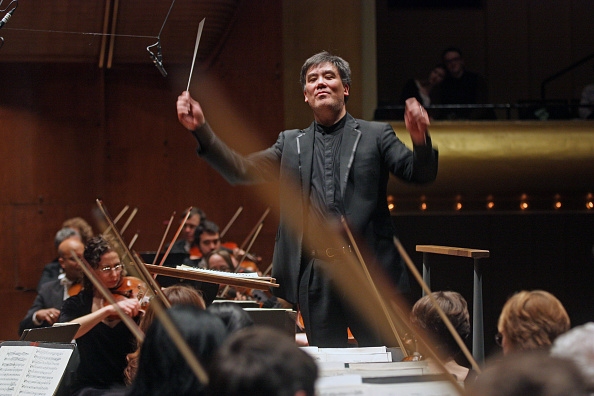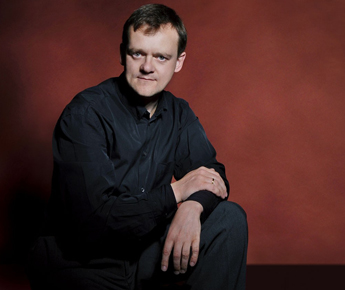Old worlds collide and make the strongest impact with Gilbert, Philharmonic

Alan Gilbert led the New York Philharmonic in music of Respighi, Stravinsky and Lindberg Thursday night at David Geffen Hall. File photo: Hiroyuki Ito/Getty Images
There is no escaping the influence of Igor Stravinsky for composers working over the past century — with the possible exception of one Ottorino Respighi, an Italian music scholar who denounced the tonal heresies of Stravinsky, and wrote as if none of it had happened.
Yet there they both were, sharing the bill Thursday night at Lincoln Center’s David Geffen Hall, courtesy of the New York Philharmonic: Respighi’s grandly melodic Church Windows from 1927 and Stravinsky’s dissonant, ground-breaking 1913 masterpiece, The Rite of Spring.
Placed not side by side but as bookends to another opus, the odd couple made great sense, with conductor Alan Gilbert going all in and eliciting impassioned, fully invested accounts of both works as well as the newer entry: the U.S. premiere of Magnus Lindberg’s Violin Concerto No. 2, a Philharmonic co-commission.
It was a memorable evening, and one to savor considering the logistical uncertainty ahead for the Philharmonic, which must carry on after Gilbert’s announced exit in 2017 and adjust to a temporary home during major renovations to Geffen — nee Avery Fisher — starting in 2019.
For now, everything sounded just about perfect, even if the centerpiece of the evening — Lindberg’s concerto — wasn’t quite.
The concerto is an attractive set piece for reconciling Respighi’s love of orderly harmony within Stravinksy’s search for beauty in chaos. How it fared strictly on its own terms, as a standalone work of three movements including a fiery cadenza, was less certain.
Technically stunning, the concerto engaged soloist Frank Peter Zimmermann and various sections of the orchestra in intense dialogues that sometimes felt unattached to any larger narrative.
The symphonic sparring was a thrill to hear in passages that demanded as much expressiveness, agility and explosiveness from blocs of instruments — strings, woodwinds and brass — as they did from the soloist. The orchestra, in Lindberg’s conception of the concerto, is far more than just backing or drapery for a featured player.
But Church Windows and especially The Rite of Spring demonstrated, by way of comparison, the value of a good story, whether or not the music has explicitly literary inspiration such as scripture or pagan folklore. The Finnish composer’s concerto had momentum in abundance, and breathtaking flourishes, but a stronger narrative thread was harder to make out.
Church Windows is essentially a collection of stories, beginning with a biblical exodus, “The Flight into Egypt,” and concluding with an exaltation, “St. Gregory the Great.” In the former, Respighi’s modal depiction of wondrous, exotic Egypt was sumptuous and — perhaps unavoidably — a little dated, but still beautifully rendered by the orchestra.
His musical profiles of Gregory and two more saints — “St. Michael the Archangel” and “St. Clare at Matins” — ranged from orchestral thunder to pastoral repose, but each retained a distinct, discernible personality.
Part of the enduring beauty of Respighi’s work in Church Windows lies in how it builds to epiphanies — such as the celestial organ solo in the last movement. There’s a quiet, steady accumulation of sound and harmony, and Gilbert and the orchestra were graceful and attentive in their constructions. Respighi’s devotion to older classical forms was no bar to enjoying his music solely for its aesthetic or spiritual beauty.
The Rite of Spring, one century later, has aged incredibly well — better, in fact, than a lot of other composers’ efforts to capitalize on Stravinsky’s weird innovations. The way he stacked seemingly incompatible harmonic sets atop one another and deployed jagged, shifting rhythmic figures has proved tough to surpass.
A symphony about pagan sacrifice — the rite in question — would seem to call for some violence of form. Stravinsky found the divided, fractured musical language he needed to express awe at peasant life’s deep connection to nature, and horror at the idea of a girl being chosen to dance herself to death in order to appease the gods and guarantee a harvest.
Gilbert, in the throes of his work, struck a fitfully jarring figure of his own, arms flapping like pterodactyl wings as he summoned shrieking woodwinds and stabbing strings. This was a thorough celebration of the eternally sublime strangeness and beautiful tumult that characterized The Rite of Spring in its riot-causing debut and make it the symphonic force of nature it remains.
The program will be repeated 8 p.m. Saturday at Geffen Hall. http://nyphil.org/concerts-tickets/1516/gilbert-conducts-the-rite-of-spring
